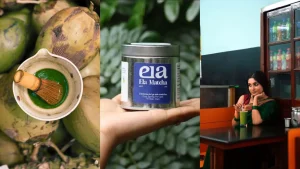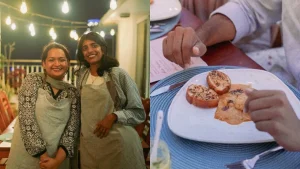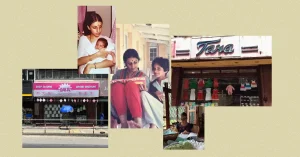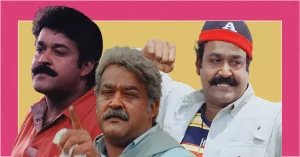Rajat Prakash, better known by his stage name Hatsmyth, was born and raised in Delhi. He has been living in Kochi for the past two years, steadily making a name for himself in Kerala’s evolving indie music scene. His sound is difficult to categorise; it is experimental, emotional, and deeply personal. “Every song is a new world,” he explains. “I don’t like to confine my music to just one category.”
Childhood Scored by Music
Rajat’s fascination with sound began early. “When I was in fifth standard, my dad had an analogue speaker. I used to listen to Michael Jackson songs all day. I loved the sound so much that I knew I had to do something with music,” he recalls. From that moment, he knew music was something he wanted to create and to live through.
The name “Hatsmyth” has its own unique origin story. As a child, Rajat simply loved hats. He enjoyed the idea of wearing one. “In all the comics I drew as a kid, my character, always the sidekick, would wear a hat,” he laughs. “I didn’t even know why, but it became my thing.” Over the years, the hat became his signature, a nod to the artist he would one day become. Thus, the artist name, Hatsmyth.

From Rap Battles to Real Music
Back in Delhi, Rajat used to watch Epic Rap Battles of History on YouTube, videos where historic and pop culture figures faced off through rap. Inspired, he and his friend Vamshi started creating their own versions in school. “He’d produce the beat, and I’d write and rap,” he says. Soon, they were experimenting with mixtapes, a format that was trending at the time.
Rajat never had formal training. Everything he knows about music production, he learned by experimenting, failing, and trying again. “I’ve always been a trial-and-error person,” he says. “I didn’t want to learn under someone; I wanted to explore it on my own.” That curiosity became his biggest teacher. Over time, as he collaborated with other musicians, he kept learning, organically and relentlessly.
Also Read: Why Aksomaniac Is a Name You’ll Want to Remember
Finding His Voice
With over 30–40 unreleased tracks in his library, Rajat’s creative energy is something you cannot put a word to. His early releases, like Shambho Shankara Namah Shivaya (2016), caught online attention, followed by Vandine Thedum in 2021 and Athimanoharan in Vaazha. But for Rajat, these were only stepping stones. “I’ve had viral moments before,” he says. “But I’ve never really been able to express myself fully, maybe just 20% of what I want to say through my music.”
For him, every song begins as a feeling. “Anything that happens in my life that affects me emotionally becomes a song,” he says. “Music is my therapy. It’s how I process everything inside me.”
Not So Hip-Hop: The Most Personal Work Yet by Hatsmyth
Rajat’s latest project, Not So Hip-Hop, has been making waves across the indie circuit. He blends Malayalam lyrics with hip-hop structures and experimental beats, creating something that feels rooted but has some sort of globality to it.
The album is a reflection on the struggles of being an independent musician in Kerala, the challenges of explaining creative work to family, and the complex reality of trying to make art in a world that doesn’t always understand it.
“It’s about the challenges I’ve faced, the industry here, and the perception of indie artists,” he explains. “If you listen to the album, you’ll understand me as an artist.”
A Community That’s Still Growing
Behind the scenes, Rajat’s manager, Theertha Avinash, has been part of his journey since Not So Hip-Hop was just a demo. “Rajat knows exactly what he wants,” she says. “He understands the music, the audience, and the emotion behind every track. That knowledge is definitely taking him ahead.”

But both Rajat Prakash and Theertha Avinash know that Kerala’s indie scene is still finding its footing. “There are two kinds of indie musicians,” Theertha explains. “One group can sustain themselves through film collaborations, while the other, which is much larger, still needs other jobs to survive. The revenue system isn’t stable yet for upcoming indie artists, whether for shows or streaming.”
Together, they’re part of a growing movement that wants to make the indie scene in Kerala more sustainable, a space where artists can collaborate freely, get paid fairly, and keep making art that’s authentic.
Even as Hatsmyth works on new projects and collaborations, he remains grounded in what started it all, his love for storytelling through sound. His music might shift genres, but his message remains the same: “I just want people to hear my story. And maybe in my story, they’ll find theirs too.”
Also Read: Rewatching Ravanaprabhu: The Problem Isn’t the Film, It’s the Audience







